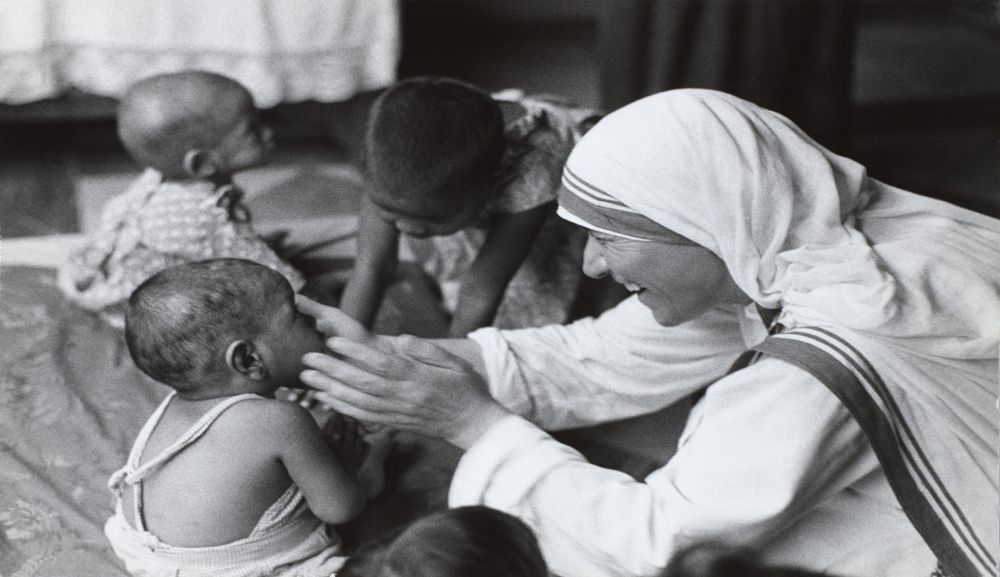“By blood, I am Albanian. By citizenship, Indian. By faith, I am a Catholic nun. As to my calling, I belong to the world. As to my heart, I belong entirely to the Heart of Jesus.”
Small of stature, rocklike in faith, Mother Teresa of Calcutta was entrusted with the mission of proclaiming God’s thirsting love for humanity, especially for the poorest of the poor.

This luminous messenger of God’s love was born in 1910, in Skopje, capital of the Republic of Macedonia. At a very young age she felt a calling to be a nun and serve through helping the poor. She took her formal religious vows in 1931, and chose to be named after St Therese of Lisieux – the patron saint of missionaries. On her arrival in India she began by working as a teacher. However on September 10, 1946 Mother Teresa experienced what she later described as ‘the call within the call’ while travelling by train to Darjeeling from Calcutta,"I was to leave the convent and help the poor while living among them. It was an order. To fail would have been to break the faith." This second calling would forever transform her life and led to her starting a new order called ‘The Missionaries of Charity’.
The whole of Mother Teresa’s life and labour bore witness to the joy of loving, the greatness and dignity of every human person, the value of little things done faithfully and with love, and the surpassing worth of friendship with God.The primary objective of this mission was to look after people who nobody else was prepared to look after. As she once said, “Love cannot remain by itself — it has no meaning. Love has to be put into action, and that action is service.”
“Not all of us can do great things. But we can do small things with great love.”
In 1979, she was awarded the Nobel Peace Prize ‘for work undertaken in the struggle to overcome poverty and distress, which also constitutes a threat to peace.’ She didn’t attend the ceremonial banquet, but asked that the $192,000 fund be given to the poor.
When Mother Teresa received the Nobel Prize she was asked, “What can we do to promote world peace?” She answered “Go home and love your family.” In later years she was more active in western developed countries. She commented that though the west was materially prosperous, there was often a spiritual poverty. She said, “In the West we have a tendency to be profit-oriented where everything is measured according to the results and we get caught up in being more and more active to generate results. In the East — especially in India — I find that people are more content to just be, to just sit around under a banyan tree for half a day chatting to each other. We Westerners would probably call that wasting time. But there is value to it. Being with someone, listening wihtout a clock and without anticipation of results teaches us about love. The success of love is in the loving — it is not in the result of loving.”
“The hunger for love is much more difficult to remove than the hunger for bread.”
I alone cannot change the world, but I can cast a stone across the waters to create many ripples. ‘When once a chairman of a multinational company came to see me to offer me a property in Bombay, he first asked: “Mother, how do you manage your budget?" I asked him who had sent him here. He replied: “I felt an urge inside me.” I said: “Other people like you come to see me and say the same. It was clear God sent you, Mr. A, as He sends Mr. X, Mrs. Y, Miss Z, and they provide the material means we need for our work. The grace of God is what moved you. You are my budget. God sees to our needs as Jesus promised.” I accepted the property he gave and named it Asha Daan (Gift of Hope).
Following Mother Teresa’s death, the Vatican began the process of beatification, which is the second step on the way to canonisation and sainthood. Mother Teresa was formally beatified in October 2003 by Pope John Paul II and is now known as Blessed Teresa of Calcutta.
By 2013, there were 700 missions operating in over 130 countries.
The greatest science in the world; is heaven and on earth; is love.